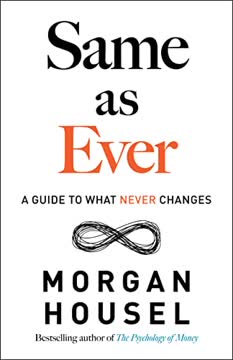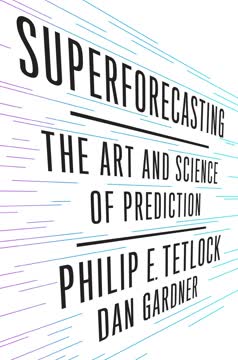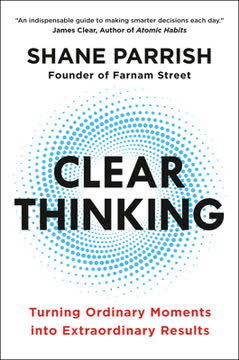نکات کلیدی
۱. جنبهی اجتماعی استراتژی مانع حرکتهای بزرگ و تصمیمهای جسورانه میشود
استراتژی تنها چیزی نیست که در اینجا در معرض خطر است؛ شغلها و حتی مسیرهای شغلی نیز در خطر قرار دارند.
ماهیت انسانی استراتژی را پیچیده میکند. در اتاق استراتژی، منافع شخصی، ترس از ریسک و تعصبات شناختی اغلب بر تصمیمگیری منطقی سایه میاندازند. مدیران ممکن است امنیت شغلی را به حرکتهای جسورانهای که میتواند به نفع شرکت باشد ترجیح دهند. این موضوع منجر به موارد زیر میشود:
- تعیین اهداف آسان برای دستیابی (Sandbagging)
- پیشبینیهای بلندمدت بیش از حد خوشبینانه (Hockey stick projections)
- توزیع منابع به صورت یکنواخت به جای تمرکز بر حوزههای با پتانسیل بالا (Peanut butter spreading)
غلبه بر دینامیکهای اجتماعی حیاتی است. برای انجام حرکتهای بزرگ و تصمیمهای جسورانه، شرکتها باید این عوامل انسانی را با:
- تشویق به گفتوگوی باز و به چالش کشیدن فرضیات
- همسویی مشوقها با موفقیت بلندمدت شرکت
- استفاده از دادهها و معیارهای خارجی برای مقابله با تعصبات
مدیریت کنند.
۲. سود اقتصادی منحنی قدرت عملکرد شرکتها را نشان میدهد
شرکتهای حاضر در بالاترین یکپنجم بازار تقریباً ۹۰ درصد از سود اقتصادی ایجاد شده را به خود اختصاص میدهند و به طور متوسط سالانه ۱.۴ میلیارد دلار سود دارند.
منحنی قدرت تفاوتهای چشمگیر عملکرد را نشان میدهد. تحلیل هزاران شرکت، منحنی شدیدی از سود اقتصادی (سود پس از هزینه سرمایه) را آشکار میکند:
- یکپنجم بالایی: ۹۰٪ از کل سود اقتصادی را به دست میآورد
- سه یکپنجم میانی: سود اقتصادی کمی تولید میکنند
- یکپنجم پایینی: ارزش اقتصادی قابل توجهی را از بین میبرند
پیامدهای استراتژیک:
- حرکت به سمت بالای منحنی باید هدف اصلی استراتژیک باشد
- درک موقعیت خود در منحنی زمینه تصمیمگیری را فراهم میکند
- شیب منحنی با گذشت زمان تندتر میشود و اهمیت انتخابهای استراتژیک را افزایش میدهد
۳. روندهای صنعتی و جغرافیا تأثیر قابل توجهی بر موفقیت شرکت دارند
رقیب اصلی شما نیروی داروینی بازار است که سودآوری شما را تحت فشار قرار میدهد؛ معیار اصلی شما برای پیروزی، میزان اجتناب از این فشار است.
عوامل خارجی نیمی از موقعیت شرکت را شکل میدهند. دینامیکهای صنعت و قرارگیری جغرافیایی نقش مهمی در تعیین عملکرد دارند:
- روندهای صنعتی: حدود ۲۵٪ از احتمال موفقیت شرکت را تشکیل میدهند
- قرارگیری جغرافیایی: ۲۵٪ دیگر به احتمال موفقیت میافزاید
پیامدهای استراتژیک:
- انتخاب صنایع و مناطق جغرافیایی مناسب حیاتی است
- شرکتها باید به طور مداوم تمرکز صنعتی خود را ارزیابی و در صورت لزوم تغییر دهند
- استراتژی جغرافیایی باید بازارهای با رشد بالا را هدف قرار دهد
۴. پنج حرکت بزرگ میتوانند احتمال موفقیت را به طور چشمگیری افزایش دهند
شرکتهایی که سه حرکت بزرگ یا بیشتر انجام دادهاند، شش برابر بیشتر احتمال دارد از یکپنجم میانی به بالاترین یکپنجم صعود کنند.
حرکتهای بزرگ به طور قابل توجهی تحرک رو به بالا را افزایش میدهند. پژوهش پنج حرکت را شناسایی کرده است که در صورت اجرای گسترده، احتمال موفقیت شرکت را به طور چشمگیری افزایش میدهد:
۱. ادغام و تملک برنامهریزی شده
۲. تخصیص پویا منابع
۳. سرمایهگذاری قوی در داراییهای ثابت
۴. بهبود متمایز بهرهوری
۵. ارتقای تمایز محصول یا خدمت
نکات کلیدی:
- انجام فقط یک یا دو حرکت بزرگ احتمال رسیدن به بالاترین یکپنجم را دو برابر میکند
- سه حرکت بزرگ یا بیشتر احتمال موفقیت را ۶ برابر افزایش میدهد
- حرکتهای بزرگ باید نسبت به استانداردهای صنعت قابل توجه باشند تا تأثیرگذار باشند
۵. ادغام و تملک برنامهریزی شده و تخصیص پویا منابع محرک رشد هستند
شرکتهایی که بیش از ۵۰ درصد از سرمایهگذاریهای خود را طی ۱۰ سال بین واحدهای کسبوکار جابجا میکنند، در این دوره ۵۰ درصد ارزش بیشتری نسبت به شرکتهایی که منابع را با سرعت کمتری منتقل میکنند، ایجاد میکنند.
مدیریت فعال پرتفوی موفقیت را تقویت میکند. شرکتهایی که به طور مداوم به دنبال ادغام و تملک و تخصیص مجدد منابع هستند، عملکرد بهتری نسبت به رقبا دارند:
ادغام و تملک برنامهریزی شده:
- حداقل یک معامله در سال انجام دهند
- ارزش تجمعی معاملات بیش از ۳۰٪ ارزش بازار در ۱۰ سال باشد
- هیچ معاملهای بیش از ۳۰٪ ارزش بازار نباشد
تخصیص پویا منابع:
- بیش از ۵۰٪ سرمایه را طی ۱۰ سال بین واحدهای کسبوکار جابجا کنند
- هزینههای عملیاتی و نیروی انسانی را نیز مجدداً تخصیص دهند، نه فقط سرمایه
- به طور مداوم تخصیص منابع را ارزیابی و اصلاح کنند
۶. بهبود تمایز و بهرهوری اهرمهای حیاتی هستند
برنامههای بهرهوری تنها زمانی تفاوت واقعی ایجاد میکنند که آستانه بالایی را پشت سر بگذارید؛ باید ۲۵ درصد بیشتر از میانه صنعت در دوره ۱۰ ساله بهرهوری را بهبود دهید.
پیشی گرفتن از رقبا در معیارهای کلیدی موفقیت را رقم میزند. شرکتها باید در دو حوزه اصلی به طور قابل توجهی از صنعت خود پیشی بگیرند:
تمایز:
- دستیابی به حاشیه سود ناخالص ۳۰٪ بالاتر از میانگین صنعت
- تمرکز بر نوآوری، قدرت قیمتگذاری و ارزش پیشنهادی منحصر به فرد
بهرهوری:
- ارائه ۲۵٪ بهبود بیشتر بهرهوری نسبت به میانه صنعت
- اجرای برنامههای بهرهوری مستمر در سراسر شرکت
- حفظ و تثبیت دستاوردهای بهرهوری به جای از دست دادن آنها
۷. برنامههای سرمایهگذاری قوی عملکرد را تقویت میکنند
اهرم سرمایهگذاری زمانی به حرکت بزرگ تبدیل میشود که نسبت سرمایهگذاری به فروش بیش از ۱.۷ برابر میانه صنعت برای حداقل ۱۰ سال باشد.
سرمایهگذاری مستمر و قابل توجه رشد را به همراه دارد. شرکتهایی که به طور مداوم بیشتر از رقبا در داراییهای ثابت سرمایهگذاری میکنند، عملکرد بهتری دارند:
- آستانه: نسبت سرمایهگذاری به فروش ۱.۷ برابر میانه صنعت برای بیش از ۱۰ سال
- مزایا: افزایش ظرفیت، کارایی و مزیت رقابتی
- ریسکها: احتمال سرمایهگذاری بیش از حد یا توسعههای نامناسب زمانی
ملاحظات کلیدی:
- همسویی سرمایهگذاری با تقاضای بازار و روندهای صنعت
- حفظ انضباط در فرآیندهای سرمایهگذاری
- تعادل بین نتایج کوتاهمدت و ابتکارات رشد بلندمدت
۸. استراتژی نیازمند دیدگاه جامع و سازگاری مستمر است
استراتژی دقیقاً مشکل نادرستی برای مغز انسان و مشکل درستی برای بازیهای است، بهویژه زمانی که «دیدگاه درونی» بدون کنترل باقی بماند.
استراتژی مؤثر نیازمند دیدگاهی گستردهتر است. رویکردهای سنتی اغلب به دلیل محدودیتهای شناختی و تعصبات داخلی ناکافی هستند:
- دیدگاه درونی: اتکا بیش از حد به دادههای داخلی و تجربیات گذشته
- تعصبات شناختی: اعتماد به نفس کاذب، لنگر انداختن و تأیید تعصب
- چرخههای برنامهریزی سالانه: عدم سازگاری با شرایط به سرعت در حال تغییر
تغییرات کلیدی برای استراتژی بهتر:
- پذیرش «دیدگاه بیرونی» با استفاده از دادهها و معیارهای خارجی
- اجرای گفتوگوهای مستمر استراتژیک به جای چرخههای سالانه
- پیگیری مجموعهای از ابتکارات در افقهای زمانی مختلف
- به طور منظم فرضیات را به چالش کشیدن و بهروزرسانی برنامهها بر اساس اطلاعات جدید
۹. غلبه بر تعصبات شناختی برای استراتژی مؤثر ضروری است
جنبه اجتماعی استراتژی میتواند جنبه فکری آن را تحتالشعاع قرار دهد.
تعصبات انسانی تأثیر قابل توجهی بر تصمیمات استراتژیک دارند. شناسایی و کاهش این تعصبات برای استراتژی مؤثر حیاتی است:
تعصبات رایج در استراتژی:
- اعتماد به نفس بیش از حد: باور به پیشبینیهای غیرواقعی
- لنگر انداختن: تمرکز بر عملکرد گذشته یا اهداف دلخواه
- اجتناب از زیان: پرهیز از ریسکهای لازم برای جلوگیری از زیانهای کوتاهمدت
روشهای مقابله با تعصبات:
- استفاده از معیارهای دادهمحور و دیدگاههای خارجی
- اجرای تکنیکهای رسمی کاهش تعصب (مانند پیشمرگ، تیم قرمز/آبی)
- تشویق دیدگاههای متنوع و بحث سالم
- جدا کردن گفتوگوها درباره بهبود، رشد و ریسک
۱۰. شکستن سکون نیازمند منابع نقد و پذیرش ریسک است
برای تخصیص مجدد، باید تخصیص قبلی را لغو کرد.
انعطافپذیری منابع امکان حرکتهای بزرگ را فراهم میکند. بسیاری از شرکتها به دلیل محدودیت منابع و ترس از ریسک در اجرای تغییرات استراتژیک دچار مشکل میشوند:
چالشها:
- سکون بودجه: منابع در واحدهای کسبوکار موجود قفل شدهاند
- ترس از ریسک: تمایل نداشتن به تخصیص منابع از حوزههای «امن»
راهحلها:
- ایجاد نقدینگی منابع: آزادسازی ۱۰ تا ۲۰ درصد منابع سالانه
- اجرای «بودجهبندی مبتنی بر ۸۰٪»: به چالش کشیدن بخشی از هر بودجه
- محاسبه هزینه فرصت: تشویق به استفاده بهینه از منابع
- مدیریت ریسک در سطح پرتفوی: تعادل بین ابتکارات پرریسک و کمریسک
۱۱. اجرا با اجبار به برداشتن گام اول آغاز میشود
شرکتها به ندرت به دلیل حرکت بیش از حد سریع شکست میخورند، اما اغلب به دلیل حرکت بیش از حد کند میمیرند.
تبدیل استراتژی به عمل نیازمند گامهای فوری است. بسیاری از استراتژیها به دلیل فقدان اقدامات ملموس کوتاهمدت شکست میخورند:
اشتباهات رایج:
- فلج تحلیلی: برنامهریزی بیپایان بدون اجرا
- اهداف بلندمدت مبهم: فقدان گامهای عملی و مشخص
کلیدهای اجرا:
- تقسیم برنامههای بلندمدت به بازههای ۶ ماهه
- تعیین اهداف نزدیک با معیارهای عملیاتی واضح
- تمرکز گفتوگوهای اولیه عملکرد بر اقدامات انجام شده، نه فقط نتایج
- بسیج فوری منابع برای ابتکارات کلیدی
- استفاده از «اسپرینتهای چابک» برای شروع اولویتهای استراتژیک
با اجبار به برداشتن گامهای ملموس اول، شرکتها میتوانند بر سکون غلبه کرده و سفر تحول استراتژیک را آغاز کنند.
آخرین بهروزرسانی::
FAQ
What's "Strategy Beyond the Hockey Stick" about?
- Focus on Strategy Execution: The book explores how companies can move beyond traditional strategic planning to make significant, impactful moves that improve their position on the Power Curve of economic profit.
- Empirical Research: It uses empirical data from thousands of companies to identify the key levers that determine strategic success, emphasizing the importance of big moves over incremental changes.
- Social Dynamics in Strategy: The authors highlight the social side of strategy, where human biases and organizational dynamics often hinder effective strategic decision-making.
- Practical Frameworks: The book provides practical advice and frameworks to help leaders overcome these challenges and make bold, data-driven strategic decisions.
Why should I read "Strategy Beyond the Hockey Stick"?
- Data-Driven Insights: The book offers a unique perspective by using empirical data to challenge conventional strategic thinking and provide actionable insights.
- Overcoming Biases: It addresses the common biases and social dynamics that often derail strategic planning, offering solutions to overcome these obstacles.
- Focus on Big Moves: The authors emphasize the importance of making significant strategic moves rather than relying on incremental improvements, which can be transformative for businesses.
- Practical Application: With its focus on real-world application, the book is a valuable resource for business leaders looking to improve their strategic planning and execution.
What are the key takeaways of "Strategy Beyond the Hockey Stick"?
- Power Curve of Economic Profit: Understanding where your company stands on the Power Curve is crucial for strategic planning and identifying opportunities for improvement.
- Importance of Big Moves: Companies need to make bold, significant moves to improve their position on the Power Curve, rather than relying on incremental changes.
- Role of Social Dynamics: Recognizing and addressing the social dynamics and biases in the strategy room is essential for effective decision-making.
- Empirical Approach: Using data-driven insights to inform strategy can significantly increase the likelihood of success and help companies beat the odds.
What are the best quotes from "Strategy Beyond the Hockey Stick" and what do they mean?
- "The social side of strategy can overwhelm the intellectual side." This quote highlights how human biases and organizational dynamics can hinder effective strategic decision-making, emphasizing the need to address these issues.
- "Big moves are essential if you’re to improve your chances of moving up the Power Curve." This underscores the book's central theme that significant, bold moves are necessary for strategic success.
- "The Power Curve is not the map actually in use." This suggests that many companies are not using the right metrics or perspectives to guide their strategic planning, leading to missed opportunities.
- "You have to make the trend your friend." This emphasizes the importance of aligning your strategy with industry and geographic trends to capitalize on growth opportunities.
How does "Strategy Beyond the Hockey Stick" define the Power Curve?
- Economic Profit Distribution: The Power Curve represents the distribution of economic profit among companies, highlighting the steep differences between top performers and the rest.
- Three Regions: It is divided into three regions: the top quintile, the middle three quintiles, and the bottom quintile, with most profits concentrated at the top.
- Strategic Goal: The goal of strategy should be to move up the Power Curve, which requires significant, bold moves rather than incremental improvements.
- Dynamic Nature: The curve is dynamic, with companies moving up and down based on their strategic decisions and external factors.
What are the "big moves" emphasized in "Strategy Beyond the Hockey Stick"?
- Programmatic M&A: Engaging in a steady stream of mergers and acquisitions to drive growth and build capabilities.
- Resource Re-allocation: Actively reallocating resources to the most promising opportunities, rather than spreading them thinly across the organization.
- Capital Expenditure: Investing significantly in capital projects that have the potential to transform the business.
- Productivity Improvement: Implementing programs to improve productivity at a rate that outpaces the industry average.
- Differentiation Improvement: Enhancing product or service differentiation to achieve a sustainable competitive advantage.
How does "Strategy Beyond the Hockey Stick" address the social side of strategy?
- Human Biases: The book identifies common cognitive biases that affect strategic decision-making, such as overconfidence and confirmation bias.
- Organizational Dynamics: It discusses how internal politics and social dynamics can lead to suboptimal strategic decisions.
- Overcoming Challenges: The authors provide strategies for overcoming these challenges, such as using data-driven insights and fostering open, honest discussions.
- Cultural Impact: The book emphasizes the importance of creating a culture that supports bold decision-making and risk-taking.
What role does empirical research play in "Strategy Beyond the Hockey Stick"?
- Data-Driven Approach: The book uses empirical data from thousands of companies to identify the key levers that determine strategic success.
- Predictive Power: The authors have developed a model that predicts the likelihood of a company's strategic success based on specific variables.
- Benchmarking: Empirical research provides a benchmark for companies to compare their strategies against a broad set of data.
- Challenging Assumptions: The data-driven approach challenges conventional strategic thinking and highlights the importance of making informed, evidence-based decisions.
How can companies use the insights from "Strategy Beyond the Hockey Stick" to improve their strategy process?
- Adopt an Outside View: Companies should incorporate external data and benchmarks into their strategic planning to gain a more accurate perspective.
- Focus on Big Moves: Prioritize significant, transformative moves that can improve the company's position on the Power Curve.
- Address Social Dynamics: Recognize and address the social dynamics and biases that can hinder effective decision-making.
- Continuous Strategy Dialogue: Shift from annual planning to a continuous strategy dialogue that allows for regular updates and adjustments.
What is the significance of trends in "Strategy Beyond the Hockey Stick"?
- Industry Trends: Understanding and aligning with industry trends is crucial for strategic success, as they can significantly impact a company's position on the Power Curve.
- Geographic Trends: Exposure to high-growth geographies can provide a competitive advantage and drive growth.
- Adapting to Trends: Companies need to be agile and adapt their strategies to capitalize on emerging trends and avoid being left behind.
- Trend Analysis: The book emphasizes the importance of analyzing trends at both the macro and micro levels to identify investable opportunities.
How does "Strategy Beyond the Hockey Stick" suggest companies overcome the challenges of strategic planning?
- Use Empirical Data: Leverage empirical data to inform strategic decisions and challenge conventional thinking.
- Make Bold Moves: Focus on making significant, transformative moves rather than relying on incremental improvements.
- Address Biases: Recognize and address the cognitive biases and social dynamics that can hinder effective decision-making.
- Continuous Improvement: Adopt a continuous strategy dialogue that allows for regular updates and adjustments to the strategic plan.
What practical advice does "Strategy Beyond the Hockey Stick" offer for implementing big moves?
- Resource Allocation: Ensure that resources are allocated to the most promising opportunities, avoiding the "peanut butter" approach.
- Risk Management: Manage risks at a portfolio level, rather than within individual business units, to optimize the overall risk profile.
- Incentive Alignment: Align incentives with strategic goals to encourage bold decision-making and risk-taking.
- First Steps: Break down big moves into actionable first steps to ensure progress and maintain momentum.
نقد و بررسی
کتاب «استراتژی فراتر از نمودار هاکی» با استقبال متفاوتی روبهرو شده است؛ بسیاری از خوانندگان رویکرد مبتنی بر دادههای آن در زمینهی استراتژی سازمانی را ستایش میکنند. مخاطبان به بینشهای ارائهشده درباره بهبود فرآیندهای برنامهریزی استراتژیک و تمرکز بر انجام اقدامات بزرگ برای افزایش عملکرد توجه ویژهای دارند. با این حال، برخی آن را تکراری میدانند و معتقدند بیشتر برای شرکتهای بزرگ کاربرد دارد. تأکید کتاب بر غلبه بر دینامیکهای اجتماعی در جلسات استراتژی و چارچوب عملی آن برای ارزیابی عملکرد شرکت، بهعنوان نقاط قوت بارها مورد توجه قرار گرفته است. اگرچه برخی از طولانی بودن کتاب انتقاد کردهاند، اما اکثریت بر این باورند که این اثر دیدگاههای ارزشمندی برای مدیران و استراتژیستها فراهم میآورد.
Similar Books














